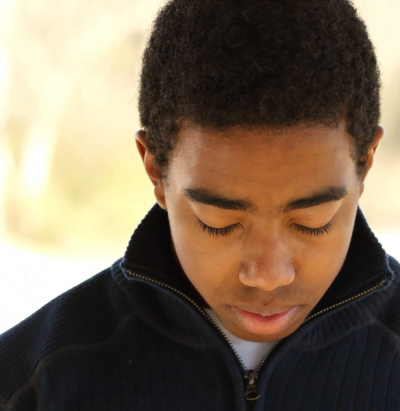Relationships
To lead fulfilling, healthy lives, everyone needs to be able to have healthy relationships. Children and youth need support to learn about and develop these skills. A relationship is healthy when it is mutually enjoyable, increases well-being, and meets the needs of everyone involved without causing harm to anyone.

Relationships are connections between people. They can be close, like those between family members, friends and lovers, or more distant, like those between schoolmates and work colleagues.
Understanding relationships starts in the family when children are young. As people move outside the home into community and school, relationship circles grow wider to take in friends, peers, teachers, teammates, helping professionals.
Relationships and Communication
Healthy communication is part of healthy relationships. This means being able to safely express and respect needs, goals and limits. Understanding communication styles can help people learn how to communicate in healthy ways.
There are four basic styles of communication:2
- Aggressive: communicator tries to intimidate or threaten the other person using loud volume, angry tone, name-calling, “you” statements, profanity, threatening gestures, glaring eye contact or even stillness and low volume. The other person may feel unsafe. This often results in escalating conflict.
- Passive: communicator tries to avoid or escape conflict by using quiet volume, saying “I’m sorry,” shrinking body language and minimal eye. This often happens if the person is feeling unsafe but may escalate conflict.
- Passive-aggressive: communicator tries to manipulate someone by using a sarcastic tone, exaggerated gestures and facial expressions and saying one thing (such as an apology) and clearly meaning another. This is often used when the person is frustrated or angry but doesn’t know how to express it. This often escalates conflict.
- Assertive: communicator describes the situation and states feelings, needs, expectations and limits using even, calm volume, tone and body consistent with stated emotions and “I” statements.
When youth are presented with a situation that is unsafe or uncomfortable, ideally, they would use assertive communication to REFUSE that situation. However they can also DELAY or NEGOTIATE to avoid participating in an activity that is not right for them.
Consent conversations are part of healthy relationships. This means being able to ask permission and accept the answer, even if it’s not the answer they wanted. It also means being able to say yes or no.
Consent is permission for something to happen or an agreement to do something.4 Consent is about respect and communication. It is important for people to learn about consent from an early age because it leads to better relationships with family, friends, peers and romantic partners.5 Consent includes knowing and respecting personal boundaries as well as the boundaries of others. Knowing what you and others are comfortable with can help keep relationships safe and healthy. Understanding consent means that you have the skills to leave a situation that does not feel comfortable and respecting those who wish to do the same.5
Sex without consent is sexual assault.
For more information on consent and sexual assault, click here.
Relationships can be healthy, unhealthy or abusive.
To check to see if your relationship is healthy, unhealthy or abusive, click here.
Healthy Relationships
Healthy relationships make us happy and healthy.
Both partners feel safe, communicate and work out disagreements respectfully and can set and respect boundaries; partners can spend time alone and there is no violence or threat of violence.1
Unhealthy Relationships
Unhealthy relationships make us sick.
Partners feel awkward and embarrassed when sharing ideas and feelings; there is jealousy, pressuring or possessiveness and disagreements turn into fights.1
Abusive Relationships
Abuse impacts all areas of health and can be life threatening.
A partner is harmed in the relationship; they are afraid to communicate feelings, boundaries or ideas because it could result in physical violence, forced sexual contact, threats, name-calling or other abuse. Abuse can be emotional, physical, sexual, financial, social or spiritual. Neglect is also a form of abuse.1
All abusive relationships are unhealthy, but not all unhealthy relationships are abusive.
Recognizing and Responding to Abuse
People may wonder if someone they know is in an abusive relationship.
Warning signs of abuse include:
- Personality changes such as becoming withdrawn, depressed, angry, fearful or overly cheerful.
- Behavior changes such as stopping regular activities, excessive apologizing, neglecting hygiene, or making excuses for others.
- Physical marks or injuries, attempts to hide injuries or excuses for injuries.
- Admitting to abuse or subtle hints at abuse.6

Relationships that are abusive tend to follow an abuse cycle that looks something like this:

As the cycle repeats, the intensity and harm caused by each incident often becomes increasingly serious.
It is important to not be silent if you suspect abuse. However, it can be hard to know how to raise a concern about abuse and how to be a support for someone involved in an abusive relationship.
Some ways of bringing up a concern of abuse are:
- Asking if violence or abuse is part of their life – they may say yes or no, but the more times a person is asked, the more chances that person has to disclose when they are ready.
- Talking about your observations and saying that these are sometimes indicators of abuse.
- Giving them information about available supports. Find supports in Alberta at: https://www.alberta.ca/family-violence-find-supports.aspx
Once someone has said that they are involved in an abusive relationship, they might choose to leave the relationship or they might choose to stay in it. In either case, people can be supported in creating a safety plan and learning about support services in their community.


